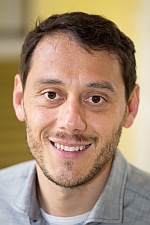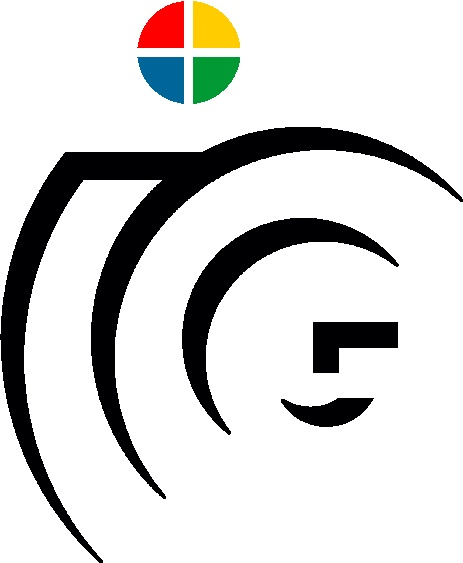
Martin Urschler, see also personal ICG website.

Alexander Bornik was a PhD and a post doc at the Institute for Computer Graphics and Vision at Graz University of Technology. Currently he is a key researcher at the Ludwig Boltzmann Institute for Computer Graphics and Vision, where he is responsible for 3d visualization and in-court presentation of forensic radiological data as well as 3D crime site reconstruction for documentation purposes.
Record not found: ResearchProject

Integrated computer-aided forensic case analysis, presentation, and documentation based on multimodal 3D data
Three-dimensional (3D) crime scene documentation using 3D scanners and medical imaging modalities like computed tomography (CT) and magnetic resonance imaging (MRI) are increasingly applied in forensic casework. Unlike photographs and 3D surface models, images from CT and MRI are not self-explanatory. Combining different sources of information is technically challenging due to the heterogeneous data representations including volumetric data, polygonal 3D models, and images. This paper presents a novel computer-aided forensic toolbox providing tools to support the analysis, documentation, annotation, and illustration of forensic cases using heterogeneous digital data. Conjoint visualization of data from different modalities in their native form and efficient tools to visually extract and emphasize findings help experts to reveal unrecognized correlations and thereby enhance their case understanding.
Bornik A, Urschler M, Schmalstieg D, Bischof H, Krauskopf A, Schwark T, Scheurer E, Yen K: Published in Forensic Science International 287:12-24, 2018. PDF,DOI

Dynamic Label Placement for Forensic Case Visualization
Forensic case analysis and in court presentation requires comprehensible illustrations and animations of findings and their relations to the course of events. Often this can only be achieved by adding textual descriptions. From a systems point of view, this requires automated label placement functionality for scenes composed of translucent polyhedral models and volumes, which we achieve through tight integration of the automated label placement algorithm and the hybrid volume/surface rendering system.
Sirk C, Schmalstieg D, Kalkofen D, Bornik A: In EuroVis 2017 - Short Papers, Barcelona, Spain, 2017. DOI, Received the Best Short Paper Award

Assessment of fiducial markers to enable the co-registration of photographs and MRI data
The purpose of this work was to investigate the visualisation of novel external fiducial skin markers in photography and MRI. To co-register photographs and MR images, and additionally assess the spatial accuracy of these coregistrations with the view of future application in the investigation of forensically relevant soft tissue lesions.
Webb B, Petrovic A, Urschler M, Scheurer E: Published in Forensic Science International 248:148-53, 2015. PDF,DOI

Intuitive presentation of clinical forensic data using anonymous and person-specific 3D reference manikins
The increasing use of CT/MR devices in forensic analysis motivates the need to present forensic findings from different sources in an intuitive reference visualization, with the aim of combining 3D volumetric images along with digital photographs of external findings into a 3D computer graphics model. This model allows a comprehensive presentation of forensic findings in court and enables comparative evaluation studies correlating data sources.
Urschler M, Hoeller J, Bornik A, Paul T, Giretzlehner M, Bischof H, Yen K, Scheurer E: Published in Forensic Science International 241:155-66, 2014. PDF,DOI

Clustered Deep Shadow Maps for Integrated Polyhedral and Volume Rendering
This paper presents a hardware-accelerated approach for shadow computation in scenes containing both complex volumetric objects and polyhedral models. Our system is the first hardware accelerated complete implementation of deep shadow maps, which unifies the computation of volumetric and geometric shadows.
Bornik A, Knecht W, Hadwiger M, Schmalstieg D: Presented at International Symposium on Visual Computing (ISVC) 2012, Crete, Greece. PDF, DOI

Forensic-Case Analysis: From 3D Imaging to Interactive Visualization
Forensic-case analysis relies heavily on digital information for documentation, especially to reconstruct accident and crime scenes and to present forensic fndings in court. We’ve developed a software framework for analyzing and presenting forensic cases involving 3D volumetric data from medical-imaging modalities.
Urschler M, Bornik A, Scheurer E, Yen K, Bischof H, Schmalstieg D: Published in IEEE Computer Graphics & Applications 32(4):79-87, 2012. PDF,DOI

Interactive 3D Segmentation as an Example for Medical Visual Computing
Segmentation of medical volume data sets is an important research topic due to its large number of potential clinical applications. In this work we present a novel 3D segmentation paradigm that effectively combines interaction, segmentation and volumetric visualization in a single framework integrated on a modern graphics processing unit (GPU).
Urschler M, Bornik A, Scheurer E, Pock T, Bischof H: Published in Vermessung & Geoinformation 3/2009:311-18. PDF
MIB Menu
- Back to Projects Overview
- Back to Group Overview
- Back to Team Bischof
